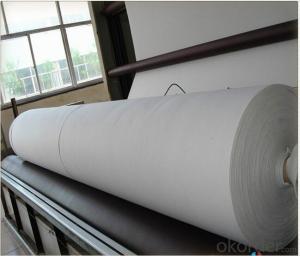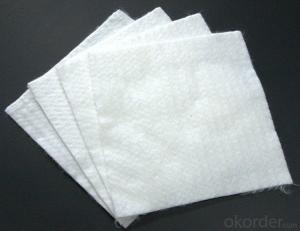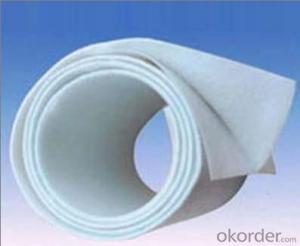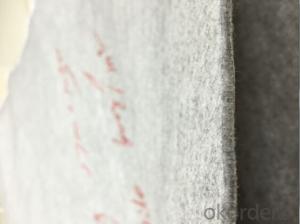Geotextile Non Woven PP Earthwork for Road and Railway
- Loading Port:
- Tianjin
- Payment Terms:
- TT or LC
- Min Order Qty:
- 5000 m²
- Supply Capability:
- 2000000 m²/month
OKorder Service Pledge
OKorder Financial Service
You Might Also Like
Quick Details
Type: GeotextilesPlace of Origin: Hebei, China (Mainland)Brand Name: CMAX GeotextileModel Number: HT3258Geotextile Type: Non-Woven GeotextilesColor: Black , white , greyApplying Area: Road,River bank , lake dam, mine remainings, reservior, tunnelManufacturing method: Nonwoven / wovenWidth: within 8mWeight: 100-1500gsmLength: 50-100m/roll;at requestName: PP Geo Fabric Rolls/ geotxtile used in garbage burying field
Packaging & Delivery
Packaging Details:pallet and design the packing according to client's requestsDelivery Detail:15-30days after received deposit
Landfill Geotextile Polyurea
1. Geotextile Specifications
1) Weight / Mass: 100g/m2-1500g/m2 .
2) Width: Within 8 m (1m-8m as request ).
3) Length: 50m-100m/roll (as request).
4) Material: PP / PET .
5) Certificate: CE/ISO9001/ISO14001
6) Manufacturing method: nonwoven / woven.
2. nonwoven geotextile Features :
1) Staple fibers geotextile:
The geotextile is made of polypropylene staple fibers on cross-laying equipment and needle punched equipment.
It owns the advantages of acid and alkali resistance, erosion resistance, aging resistance, large strength, stable size, good filtrability etc.
2) Filament geotextile:
Filament geotextile has features as follows: High strength, good capacity of elongation and high biology tolerance, alkali tolerance, acidity tolerance, weather resistance good filtration and fine drainage capacity etc. Also it is of low cost, easy in construction and use effects.
3. geotextile Applications
1) Filtration geotextile:
The filtration layer of the dykes, river canal, seacoast, concrete slope, retaining walls. At the same time of preventing the clay granule from passing, it allows the water and the gas pass through freely.
2) Separation geotextile:
The isolation of the railway dregs and the roadbed, roadbed and the soft base, surface of the airdrome and parking lot and the groundsill, different dam materials. It isolates the soil and the gravel of two kinds different granule pathway from the groundsill or other buildings.
3)Adding geotextile:
The highway, railway, soil-stone dam, breakwater, airport, backfill soil of retaining wall, slope protection, etc in which distributes the earth stress, prevents the side-displacement of the earth body and improves the earth body stability.
4) Protection geotextile:
It prevents the bank from being washed out, protects the bank and the bottom, prevents the water and soil from being washed away.

Application
It widely used in civil environmental engineering and construction projects . Such as railway , highway , road , landfill , gymnasium , dike , marine works , tunnel , tide flat , reclamation and environment protection projects.
They use include:
u Filtration of soils in drainage applications by retaining soil particles while allowing for the free flow of water
u Separation and stabilization in road and railway construction
u Prevention of soil movement in erosion control measures
u Cushioning and protection in many containment projects
Service we can provide
1. Good after sales service: Any small problem happening will be solved at the most prompt time;
2.We have many years of experience, we have specializing in fastener;
3. Specifications list is available upon your request
4. Welcome to send enquiry,we will reply soon.If you want to know more,pls feel free to contact us.
5. Prompt shipment with professional documents
6. Packing as your request, with photo before shipment
7. High quality and competitive price
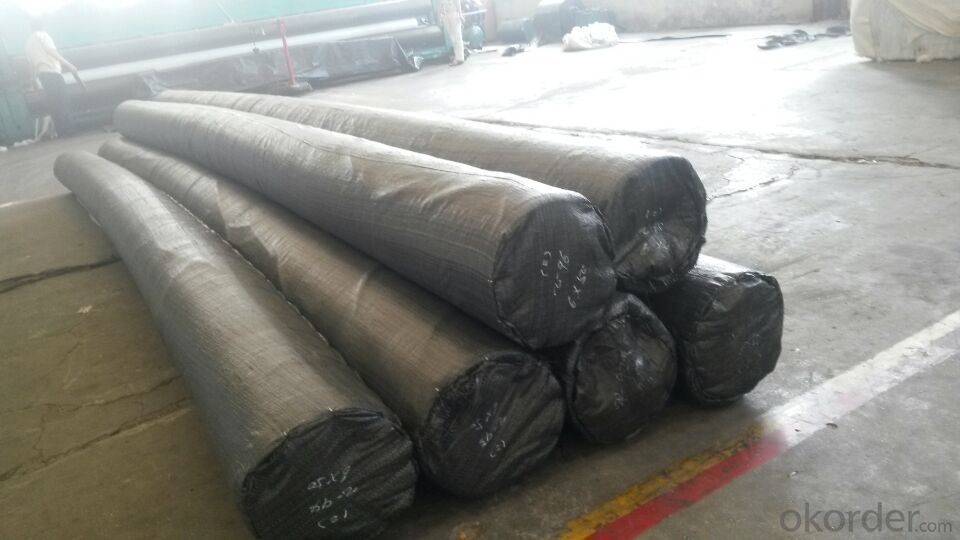
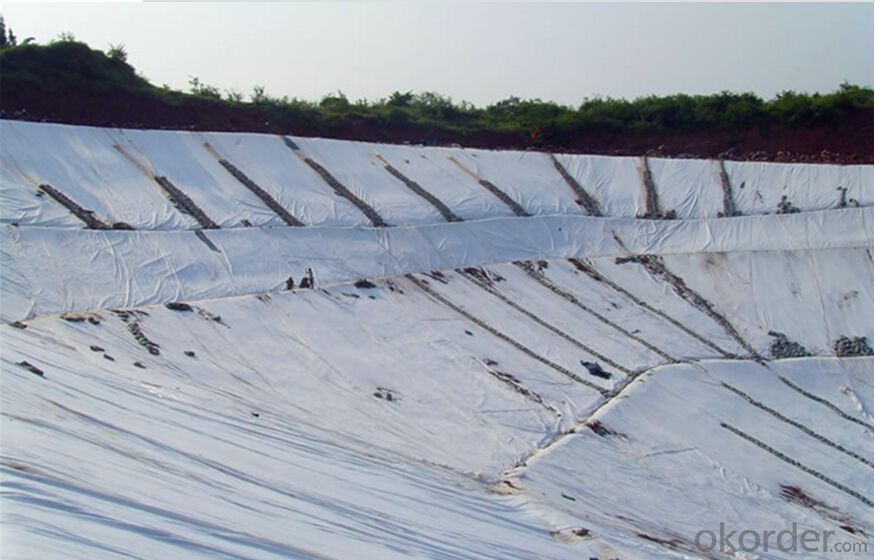


- Q:Geotextile how to sampling
- Related methods can refer to GB-1998, can also go to our factory to purchase, to observe. My contact is the name of the registration. Free testing training! All the country's site can be shipped!
- Q:How do geotextiles contribute to groundwater protection?
- Geotextiles contribute to groundwater protection by acting as a barrier that prevents the infiltration of contaminants into the groundwater. These specialized textiles are designed to allow water to pass through while retaining soil particles and other pollutants, thus filtering out harmful substances and protecting the quality of groundwater sources.
- Q:How do geotextiles help in the reinforcement of soil?
- Geotextiles help in the reinforcement of soil by providing stability and strength to the soil structure. They act as a barrier between different soil layers, preventing their mixing and maintaining their integrity. Geotextiles also distribute the load evenly across the soil, reducing the risk of settlement or subsidence. Additionally, they improve drainage and filtration by allowing water to pass through while preventing the loss of fine particles. Overall, geotextiles enhance the overall performance and longevity of soil in various engineering and construction applications.
- Q:Is there a filament geotextile manufacturer? Introduce the main performance ah
- Our road embankment reinforcement project, for example, the construction of the road first focus on the quality of the road followed by the use of these two problems, and Hongxiang new material filament geotextile just to solve. In order to improve the smoothness of the road to prevent the occurrence of reflective cracks and play the role of waterproof layer. Laying and impregnating the asphalt between the base layer and the surface layer to form the filament geotextile - asphalt interlayer. You can see the specific understanding of the user name
- Q:Measured geotextile vertical permeability, "highway engineering geosynthetics test procedures" T1141-2006 6.3 balanced head difference is not necessary to balance the 50mm? Can not balance ah more
- So deep, although we produce geotextile, but geotextile detection really is not proficient in it
- Q:What is the expected lifespan of geotextiles?
- The expected lifespan of geotextiles can vary depending on factors such as the material used, the specific application, and the environmental conditions. However, on average, geotextiles are designed to have a lifespan of at least 25 to 30 years.
- Q:What are the key differences between woven and nonwoven geotextiles?
- The key differences between woven and nonwoven geotextiles lie in their manufacturing processes and physical properties. Woven geotextiles are created by interlacing individual yarns or fibers in a crisscross pattern, resulting in a stable and strong fabric. On the other hand, nonwoven geotextiles are manufactured by bonding or felting fibers together using mechanical, thermal, or chemical processes, resulting in a fabric with random fiber orientation. Woven geotextiles typically have higher tensile strength and puncture resistance due to their interlocked yarns, making them suitable for applications that require structural stability and load distribution. They are commonly used in road construction, erosion control, and soil stabilization projects. Nonwoven geotextiles, while generally having lower strength properties compared to their woven counterparts, offer advantages such as filtration, drainage, and separation functions. They are commonly used for filtration and separation in drainage systems, as well as in erosion control, landscape fabric, and geocomposite applications. Overall, the choice between woven and nonwoven geotextiles depends on the specific project requirements, such as load-bearing capacity, filtration needs, and budget considerations.
- Q:Can geotextiles be used in shoreline restoration projects?
- Yes, geotextiles can be used in shoreline restoration projects. Geotextiles are commonly used to stabilize and protect soils in various engineering applications. In shoreline restoration, they can help control erosion, stabilize slopes, promote vegetation growth, and protect against wave action.
- Q:What are the key considerations for geotextile installation in high-altitude regions?
- When installing geotextiles in high-altitude regions, there are several key considerations to keep in mind. Firstly, the extreme weather conditions typically found in high-altitude areas, such as low temperatures, strong winds, and heavy snowfall, can impact the installation process. Therefore, selecting geotextiles with high durability and resistance to these conditions is crucial. Secondly, proper site preparation becomes even more important in high-altitude regions. The ground should be thoroughly assessed for its stability and potential frost heaving. Adequate measures, such as ground stabilization techniques and proper drainage systems, should be employed to ensure the long-term effectiveness of the geotextile installation. Furthermore, the selection of suitable installation methods is crucial in these regions. The use of specialized equipment and techniques, such as anchoring systems or thermal bonding, may be necessary to counteract the harsh environmental conditions and ensure proper geotextile performance. Lastly, it is essential to consider the environmental impacts of the geotextile installation in high-altitude regions. This includes adhering to local regulations and best practices to minimize disturbance to sensitive ecosystems and wildlife habitats. Overall, key considerations for geotextile installation in high-altitude regions include selecting durable materials, conducting thorough site preparation, using suitable installation methods, and addressing environmental concerns.
- Q:Can geotextiles be used in erosion control blankets?
- Yes, geotextiles can be used in erosion control blankets. Geotextiles, which are permeable fabrics, are commonly used in erosion control blankets to prevent soil erosion by stabilizing the soil, reducing water velocity, and promoting vegetation growth. These blankets are typically made of biodegradable materials and are designed to provide temporary erosion control until vegetation is established.
1. Manufacturer Overview |
|
|---|---|
| Location | |
| Year Established | |
| Annual Output Value | |
| Main Markets | |
| Company Certifications | |
2. Manufacturer Certificates |
|
|---|---|
| a) Certification Name | |
| Range | |
| Reference | |
| Validity Period | |
3. Manufacturer Capability |
|
|---|---|
| a)Trade Capacity | |
| Nearest Port | |
| Export Percentage | |
| No.of Employees in Trade Department | |
| Language Spoken: | |
| b)Factory Information | |
| Factory Size: | |
| No. of Production Lines | |
| Contract Manufacturing | |
| Product Price Range | |
Send your message to us
Geotextile Non Woven PP Earthwork for Road and Railway
- Loading Port:
- Tianjin
- Payment Terms:
- TT or LC
- Min Order Qty:
- 5000 m²
- Supply Capability:
- 2000000 m²/month
OKorder Service Pledge
OKorder Financial Service
Similar products
New products
Hot products
Hot Searches
Related keywords



